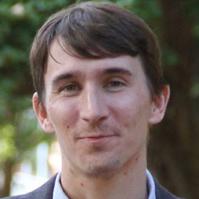Native American Student Advocacy Institute 2024
Fostering the Positive Identity Development of Indigenous Learners
Anton Treuer has no patience for well-meaning advocates who want to help Native students “get through the gates and gaps” created by schools and universities that weren’t designed to serve them. He’s aiming for a deeper kind of reform, one that puts Native knowledge and culture at the center of student life.
“We are not here for someone else’s racial comfort,” he told more than 300 attendees at College Board’s Native American Student Advocacy Institute conference. “We are here for the kids. What do they need? What delivers the goods?”
For Dr. Treuer, professor of Ojibwe at Bemidji State University, the answer is to “transform our education system into a place where they can learn about themselves, as well as the rest of the world.” That means teaching Native students in their indigenous language, establishing a foundation of cultural understanding and pride that lifts the entire academic experience. It means celebrating indigenous ways of knowing that predate the scientific method and dominant models of schooling. And above all, it means dismantling a “culture of erasure” that treats Native life as a string of tragedies and defeats.
“There are so many marvels—cultural, architectural, scientific—so many!” Dr. Treuer said. “But even our own people doubt the beauty, power, and importance of these things.” Removing that doubt about the value of Native knowledge, achievement, and resilience is the key to motivating students and raising a generation of indigenous learners determined to thrive without sacrificing a sense of identity.
Dr. Treuer pointed to the success of Waadookodaading, a language immersion school where students are taught exclusively in Ojibwe, with a focus on experiential assignments that draw on Native expertise. Students might learn math, nutrition, and history by participating in a wild rice harvest, Dr. Treuer said, emphasizing all the ways that their ancestors would have successfully tackled complex problems. The school has an explicit mission to “resist internal and external pressures to conform to westernized, English-only educational and cultural standards,” according to its website, and enrollment is growing.
The effort is modeled on similar campaigns in New Zealand and Hawaii, where native languages have enjoyed a resurgence thanks to growing opportunities for immersive education. The Hawaiian language, which was banned in the state’s public schools for generations, has made a remarkable comeback after dwindling to just a couple thousand speakers, thanks largely to the creation of immersion schools that explicitly aimed to celebrate language and culture.
It’s important not to treat such efforts as a cultural curiosity or something akin to artistic preservation, Dr. Treuer said. “This is not just about pretty birds singing in the forest,” he said of cultivating more speakers of Native languages. “It’s at the center of what it takes to orchestrate the positive identity development of indigenous learners.”
It’s that broader identity—the confidence of carrying a full and noble cultural heritage—that matters so much to students. Dr. Treuer talked about inculcating Ojibwe values in his own children, teaching his son to look out for those in need and recognize his responsibilities as a provider, someone capable of gathering resources for the whole community. “Culture is not in the professing of ideas, but in the doing of things,” he said. “Nothing can stop a Native person who knows who they are.”
Further Reading from Dr. Anton Treuer
The Cultural Toolbox: Traditional Ojibwe Living in the Modern World
The Language Warrior’s Manifesto: How to Keep Our Languages Alive No Matter the Odds
Everything You Wanted To Know About Indians But Were Afraid to Ask
